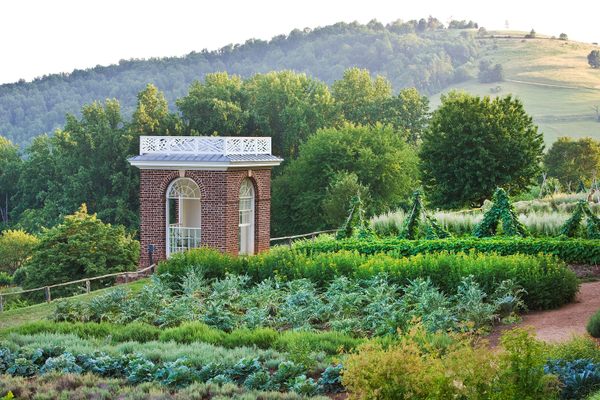About
Thanks to the fertile floodplain created by the Santa Cruz River, Tucson is one of the oldest established agricultural sites in North America, with archaeological excavations showing signs of agrarian activity as far back as 2100 B.C. It’s the reason this city was named Unesco’s Capital of Gastronomy—and a legacy you can witness for yourself at Mission Garden.
This one-of-a-kind garden is located on an ancient indigenous settlement called S-cuk Son (pronounced Skuk-shone—from which the name Tucson is derived). The self-described “living agricultural museum” transports visitors along the region’s agricultural evolution through a meticulously curated series of Timeline Gardens.
The “Early Agriculture (2100B.C.–500 C.E.)” section, for example, showcases rudimentary irrigation channels (called acequias) as well as the first crops domesticated here, like small cob maize, beans, and squash (the “Three Sisters” ubiquitous in this corner of the Sonoran Desert). The Hohokam Garden (500–1450) features a more complex irrigation system and a broader range of desert-friendly crops like tepary and lima beans, amaranth, and tobacco. The “O’odham Garden Before European Contact (1450–1692)” and “O’odham Garden After European Contact (1692–present)” highlight the agricultural changes accompanying colonization, including figs, pomegranates, wheat, and grapevines. There are also gardens dedicated to the sundry faraway cultures who, for one reason or another, came to call the Santa Cruz River basin home, from “Africa in the Americas” (mustard greens, turnips, collards) to a Mexican garden (chile, melons, garbanzos) to a Chinese garden (bitter melon, long beans, Chinese broccoli).
The garden doesn’t just revive the region’s deep past through plants. In 2019, the U.S. Fish and Wildlife Service reintroduced 500 Gila topminnows into the garden’s irrigation canals. The tiny but hardy species—once abundant, now surviving in only 14 locations within a 50-mile radius of Tucson—hadn’t been seen in the Tucson area since 1943.
If you’d like to get involved beyond a visit, Mission Garden has plenty of recurring events and activities. Every third Saturday of the month, they hold presentations on traditional O’odham agriculture; ornament workshops teach visitors how to turn discarded seed pods, gourds, and more into works of art; a Membrillo Festival every October celebrating the peak ripening of quince; as well as plant sales, Native American Arts fairs, and artists presentations announced throughout the year on their website. For a more hands-on taste of Tucson’s agricultural history, the garden also accepts volunteer gardeners on a rolling basis.
Related Tags
Community Contributors
Added By
Published
January 2, 2023
Sources
- https://www.smithsonianmag.com/travel/introducing-americas-first-capital-gastronomy-180957793/
- https://news.azpm.org/p/news-splash/2019/7/1/154134-native-arizona-fish-finds-new-home-in-tucsons-mission-garden/
- https://ebirdhotspots.com/birding-in-arizona/usaz-pima-county/usaz-mission-garden/
- https://foodstudies.arizona.edu/mission-gardens
- https://southernarizonaguide.com/revisiting-the-mission-garden-in-tucson/
- https://www.archaeologysouthwest.org/explore/mission-garden/
- https://www.missiongarden.org/























































